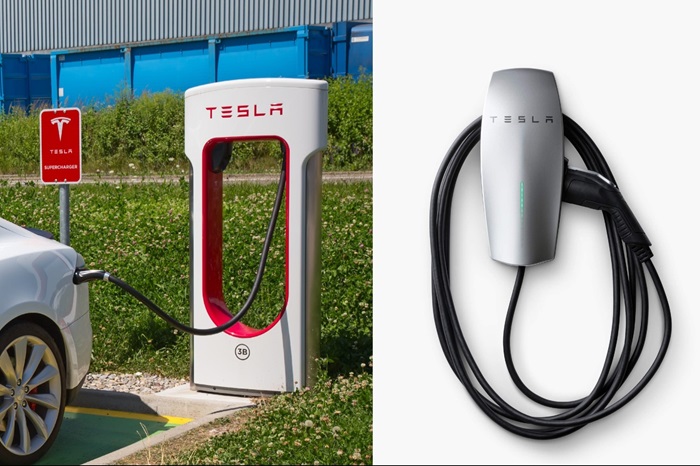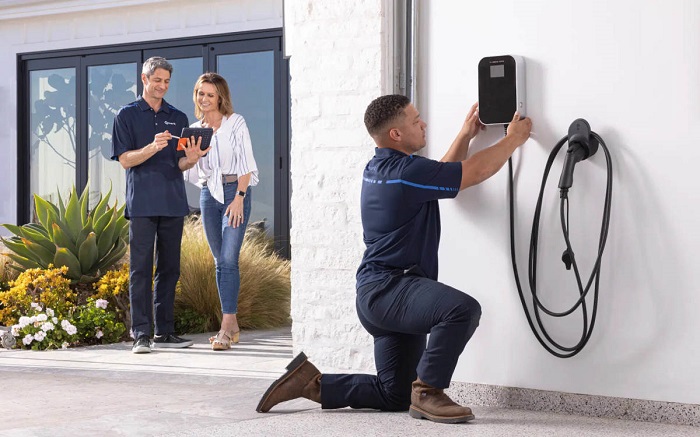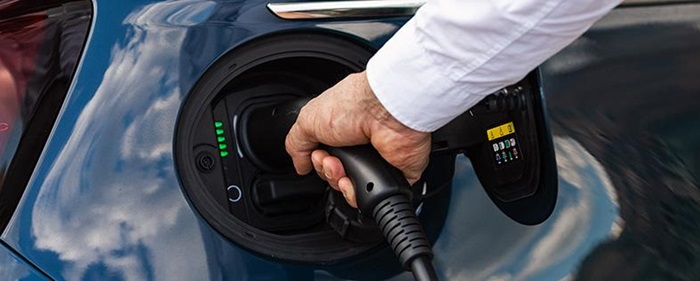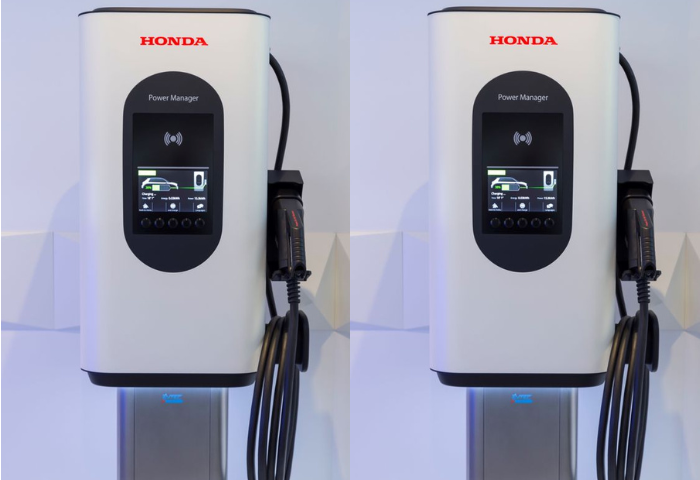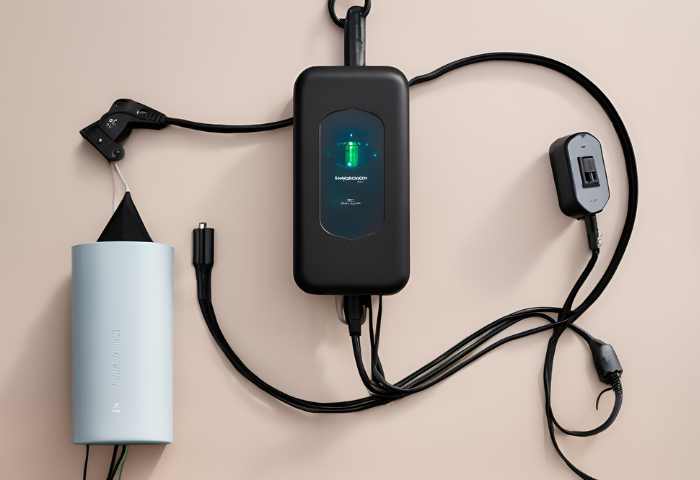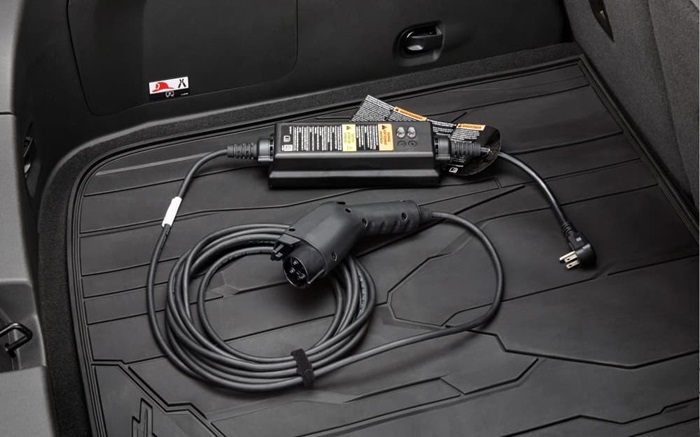Discover the Power of Level 1 Charger Watts
For many electric vehicle (EV) owners, the convenience of Level 1 charging is undeniable. Plugging your car into a standard household outlet offers a simple and accessible way to replenish your battery, especially for those with limited access to public charging stations.
However, understanding the power of Level 1 chargers, measured in watts, is crucial for optimizing your charging experience and managing your expectations.
Understanding the Basics and Specifications of Level 1 Chargers
Level 1 chargers are the simplest type of electric vehicle (EV) chargers and are typically included with the purchase of an electric vehicle. They are designed to plug into standard household outlets (120 volts AC) using a charging cable provided with the vehicle. Level 1 chargers are characterized by their relatively low power output compared to higher-level chargers.
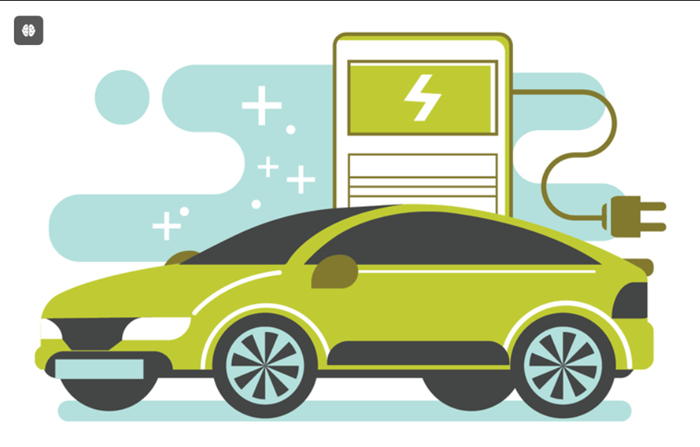
Level 1 chargers are the most basic and accessible method for charging electric vehicles (EVs). They utilize the standard 120-volt AC (alternating current) outlets found in most homes, making them incredibly convenient for topping off your EV battery overnight.
Power Specs of Level 1 Chargers:
The key factors that determine a Level 1 charger’s power output are:
- No Fixed Wattage Rating: Unlike some higher-level chargers, Level 1 chargers themselves don’t have a specific wattage rating.
- The Collaboration: The interplay between your outlet’s capacity and the amperage setting on your charging cable determines the actual power output in watts (and consequently, charging speed).
Power Output of Level 1 Chargers
Level 1 chargers typically have a power output ranging from 1.2 kW to 1.9 kW, depending on the specific make and model. The charging circuit’s amperage rating (typically 15 or 20 amps) and the outlet voltage (120 volts) determine the power output. The formula for calculating power (P) is:
P = V x I
Where:
- ( P ) = Power output in watts (W)
- ( V ) = Voltage in volts (V)
- ( I ) = Current in amperes (A)
For Level 1 charging with a standard household outlet rated at 120 volts and a typical amperage rating of 15 amps, the maximum power output would be:
P = 120 V x 15 A = 1800W = 1.8 kW
So, Level 1 chargers usually provide a power output between 1.2 kW and 1.9 kW, depending on the specific electrical characteristics of the charging circuit and the vehicle’s onboard charger.
Understanding the power specifications of Level 1 chargers is essential for determining charging times and optimizing charging routines for electric vehicles.
Benefits of Level 1 Charging: Why Watts Can Still Work for You
While Level 1 charging may not be a speed demon, there are some undeniable benefits that make it a compelling choice for many EV owners. Let’s explore why considering Level 1 charger watts can be a smart choice for your electric vehicle.

- Convenience and Accessibility:
Plug and Play Simplicity: Level 1 charging utilizes standard household outlets, eliminating the need for special installation. Simply plug in your Level 1 charger and you’re ready to go. This makes it incredibly convenient for charging at home overnight or anywhere with a standard outlet.
Wide Availability: Standard outlets are ubiquitous, making Level 1 charging a readily available option for topping off your battery on the go, whether visiting a friend’s house or using an outlet at work.
- Affordability:
Low Cost of Entry: Level 1 chargers are typically included with the purchase of an EV, or they are relatively inexpensive to acquire. There are no additional installation costs associated with using your existing household outlets.
Potentially Lower Electricity Costs: Depending on your electricity provider’s rates, charging during off-peak hours with Level 1 can translate to lower electricity costs compared to faster charging methods.
- Safety and Battery Health:
Gentle Charging: The lower power output of Level 1 charging is generally considered less stressful on the battery compared to high-power DC fast charging. This can contribute to maintaining optimal battery health over time, especially for those who primarily rely on Level 1 charging.
Reduced Risk of Overheating: The lower wattage of Level 1 charging generates less heat during the charging process, minimizing the risk of overheating compared to faster charging methods.
Choosing the Right Level 1 Charger for Your Needs
Selecting the appropriate Level 1 charger for your electric vehicle (EV) involves considering various factors to ensure compatibility, efficiency, and convenience. Here are some key factors to consider in charger selection:
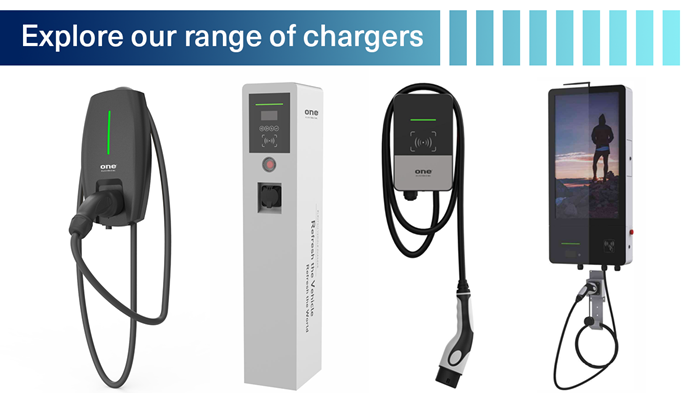
- Capacity and Power Requirements:
Assess your EV’s battery capacity and your typical daily driving habits to determine your charging needs. If you have a larger battery capacity or longer daily commutes, you may benefit from a higher-power Level 1 charger to minimize charging times.
Consider the power output capabilities of your home’s electrical system and ensure that the Level 1 charger you choose is compatible with your electrical infrastructure.
- Compatibility with Different Electric Vehicles:
Check the compatibility of the Level 1 charger with your specific make and model of electric vehicle. While most Level 1 chargers are designed to be universal, it’s essential to verify compatibility to ensure seamless charging operation.
Look for Level 1 chargers that come with adapters or connectors for different types of EVs, ensuring flexibility and compatibility across a range of vehicles.
- Features to Look for in a Level 1 Charger:
Durability and Safety: Choose a Level 1 charger that is built to high-quality standards and meets safety certifications to ensure reliable and safe charging operation.
Portable and Compact Design: Opt for a Level 1 charger that is lightweight and compact, making it easy to transport and store when not in use.
Weatherproof and Outdoor Use: If you plan to use the Level 1 charger outdoors or in harsh weather conditions, look for weatherproof and durable construction to withstand the elements.
Smart Charging Capabilities: Consider Level 1 chargers with smart charging features such as scheduling, monitoring, and remote control via smartphone apps for enhanced convenience and control over the charging process.
- Comparing Wattage Options:
While Level 1 chargers don’t advertise wattage, we can estimate the impact of amperage selection on charging speed:
- Higher Amperage (e.g., 12 amps): Utilizing the maximum safe amperage on your outlet will provide the fastest possible charging speed for a Level 1 charger (around 1440 watts).
- Lower Amperage (e.g., 8 amps): This might be suitable if you have concerns about overloading your outlet or want to prioritize safety in situations like using an unfamiliar outlet. However, it will result in slower charging speeds (around 960 watts).
In essence,most Level 1 chargers will function similarly. The key is to choose one that offers the adjustable amperage range you need to match your outlet capacity and prioritize safety. Consider any additional features that might enhance your charging experience.
Installation and Optimization: Getting the Most Out of Your Level 1 Charger
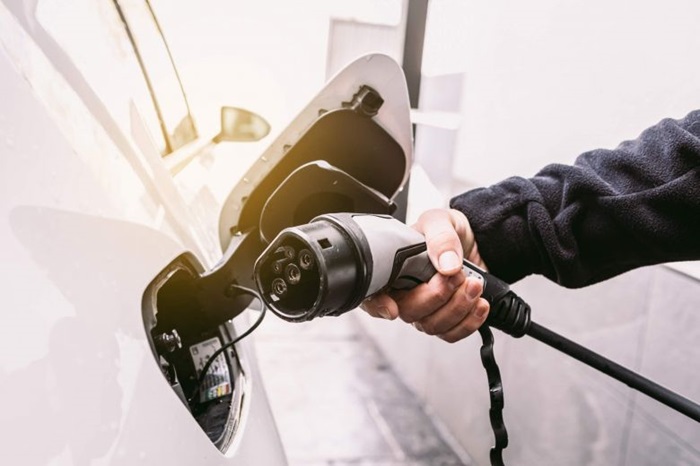
- Installation Requirements for Level 1 Chargers
Standard Household Outlet: Level 1 chargers require access to a standard household outlet, typically operating at 120 volts AC in North America. Ensure that the outlet is located in a convenient location near where you plan to park your electric vehicle (EV).
Dedicated Circuit: It’s advisable to have a dedicated circuit for Level 1 charging to avoid overloading existing circuits and ensure safe and reliable charging. Consult a qualified electrician to install a dedicated circuit if necessary.
Proper Grounding: Ensure that the electrical outlet is properly grounded to prevent electrical hazards and ensure the safety of the charging system.
- Optimizing Charging Experience with Level 1 Chargers:
Scheduled Charging: Take advantage of off-peak electricity rates by scheduling your Level 1 charging sessions during times when electricity demand and rates are lower. This can help save money on charging costs.
Monitor Charging Progress: Keep track of your EV’s charging progress using the vehicle’s onboard charging status indicators or smartphone apps. This allows you to monitor charging efficiency and make adjustments as needed.
Preconditioning: Some EVs offer pre-conditioning features that allow you to heat or cool the interior cabin and battery pack while still connected to the charger. Preconditioning can help optimize battery performance and charging efficiency.
- Tips for Efficient Charging:
Avoid Deep Discharges: Try to avoid allowing your EV’s battery to discharge to very low levels before charging. Charging from higher states of charge (SOC) can be more efficient and prolong battery life.
Minimize Phantom Load: Unplug any unnecessary devices or appliances that draw power when not in use to minimize phantom load and maximize the available charging power.
Limit Climate Control Use: Minimize the use of climate control systems while charging to reduce power consumption and maximize available charging power for the battery.
- Maximizing Usage of Watts:
Opt for Higher Wattage Chargers: If available, consider using Level 1 chargers with higher wattage ratings to maximize charging speed and efficiency.
Limit Concurrent Electrical Usage: Avoid running other high-power electrical devices or appliances simultaneously while charging your EV to ensure that the available power is dedicated to charging.
Check Charging Cables: Ensure that the charging cable is in good condition and properly rated for the charging power to minimize losses and maximize charging efficiency.
- Managing Power Consumption During Charging:
Distribute Electrical Usage: If possible, distribute electrical usage throughout the day to avoid overloading circuits during charging sessions.
Monitor Energy Usage: Keep track of your overall energy usage, including both charging and household consumption, to ensure that you stay within the limits of your electrical system.
Consider Time-of-Use (TOU) Rates: Take advantage of time-of-use electricity rates offered by some utility providers to save money on charging costs by charging during off-peak hours.
Challenges and Limitations of Level 1 Charger Wattage
While Level 1 charging offers convenience and affordability, its reliance on household outlets comes with limitations, particularly regarding wattage and charging speed.
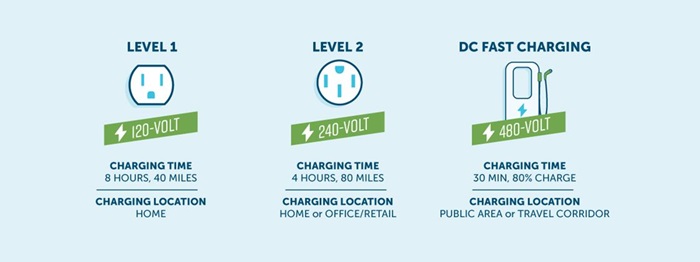
- The Wattage-Speed Trade-Off:
Limited Power Output: Standard household outlets in North America are typically rated for 15 amps. Even with a Level 1 charger set to the maximum safe amperage (usually 12 amps), the resulting wattage (around 1440 watts) is significantly lower compared to higher charging levels.
Slow Charging Speeds: The lower wattage of Level 1 charging translates to slow charging speeds. You can expect to gain only 2–5 miles of range per hour, making it impractical to quickly charge a depleted battery.
- Impact on Battery Capacity:
Minimal Impact: The relatively low power output of Level 1 charging is generally considered gentle on the battery compared to faster charging methods like DC fast charging. However, any frequent or extended charging, regardless of level, can generate heat, which can stress the battery over time. Following recommended charging practices (like avoiding constantly letting the battery deplete completely) is important for optimal battery health.
- Charging Time vs. Battery Size:
Longer Charging Times for Larger Batteries: The limited wattage of Level 1 charging becomes even more apparent with the larger battery packs found in bigger EVs. A larger battery will take significantly longer to charge to full capacity compared to a smaller one, even with the same wattage output.
In essence, Level 1 charging’s low wattage output translates to slow charging speeds, making it unsuitable for situations where you need to add a significant amount of range quickly. However, for low daily drivers with access to overnight charging, it can be a convenient and affordable way to keep their EVs topped off.
Maximizing Efficiency and Managing Consumption
Maximizing efficiency with a Level 1 charger involves optimizing the use of the available power output to charge your electric vehicle (EV) effectively. Here are some tips for maximizing efficiency with a Level 1 charger:
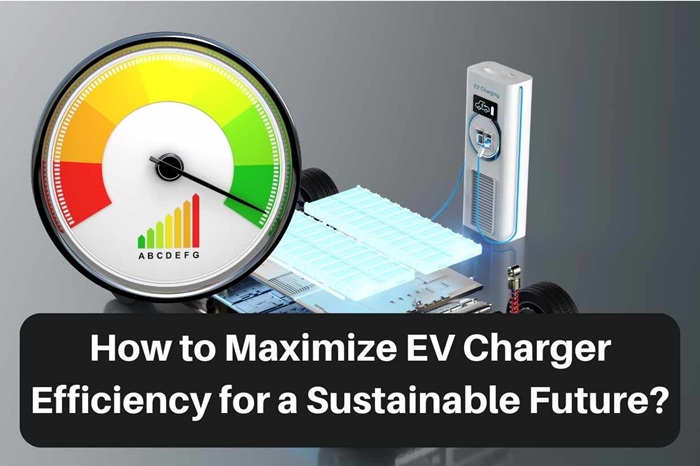
- Charge During Off-Peak Hours: Take advantage of lower electricity rates by scheduling your charging sessions during off-peak hours. This not only saves you money but also reduces strain on the electrical grid.
- Manage Charging Power: Some EVs allow you to adjust the charging power or rate through the vehicle’s settings. Lowering the charging power during Level 1 charging can reduce energy consumption and minimize heat generation, which can improve overall charging efficiency.
- Optimize Battery State of Charge: Aim to keep your EV’s battery within a moderate state of charge, typically between 20% and 80%. Avoid frequent full discharges or charging to 100%, as this can degrade battery health and reduce charging efficiency over time.
- Minimize Vampire Drain: Unplug any unnecessary electrical devices or appliances that draw power when not in use. This reduces standby power consumption, known as “vampire drain,” and ensures that more electrical capacity is available for charging the EV.
- Utilize Preconditioning: Some EVs offer pre-conditioning features that allow you to heat or cool the interior cabin and battery pack while still connected to the charger. By pre-conditioning the battery before driving, you can optimize its performance and charging efficiency.
- Monitor Charging Progress: Keep track of your charging progress using the EV’s onboard charging status indicators or smartphone apps. This allows you to monitor charging efficiency and make adjustments as needed.
Level 1 chargers, with their lower wattage output, are a crucial tool for EV owners. While they may take longer to charge a vehicle compared to higher-level chargers, their accessibility and affordability make them ideal for overnight charging at home or work.
Understanding the importance of Level 1 charger watts allows EV owners to make informed decisions about charging their vehicles, optimizing their charging experience, and maximizing the lifespan of their batteries.

Henry Michael is a leading expert in EV charging station research, specializing in innovative solutions for electric vehicle infrastructure. With a passion for sustainability and technological advancement, he is dedicated to advancing the accessibility and efficiency of EV charging worldwide.


